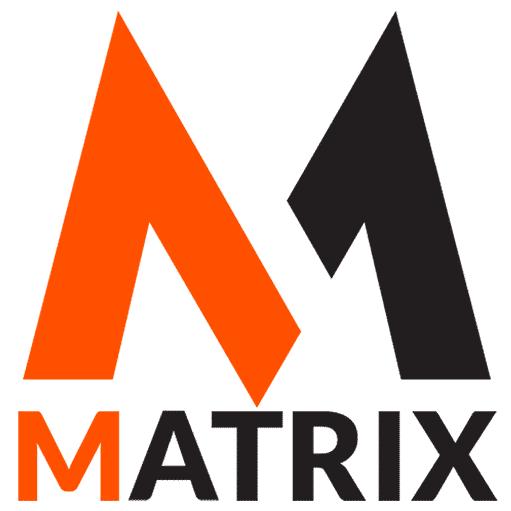The Hidden “AI Gadget Tax”: Is Your Marketing Budget Leaking Dollars?
Learn About The Hidden “AI Gadget Tax”: Is Your Marketing Budget Leaking Dollars?
Imagine your business is a high-performance vehicle. As the executive, you’re the driver, responsible for getting it to its destination faster, more efficiently, and more reliably than the competition.
To get that edge, you invest in what you believe are performance upgrades. You install a high-tech navigation system, add a turbocharger, and replace the tires with specialized ones. But instead of surging ahead, the car starts to sputter.
The fuel consumption skyrockets, the dashboard lights up like a Christmas tree, and a persistent, worrying vibration rattles the chassis.
The check engine light is your profit and loss statement. The sputtering is your frustrated team. The vibration is the operational chaos of trying to make mismatched parts work together. You’ve spent a fortune on “upgrades,” but you’ve inadvertently downgraded the entire vehicle.
In the race to adopt AI, leaders are bolting on new tools and gadgets without a unified blueprint. The result is a system that works against itself, creating friction and waste.
It’s no wonder that recent industry data from firms like Vendr shows the average mid-sized company now juggles over 137 different SaaS applications. It’s a complex web of technology that, instead of accelerating the business, is actively draining its resources.
You are, unknowingly, paying a hefty, hidden tax on your innovation efforts.
We call it the “AI Gadget Tax.”
It’s the cumulative financial bleed caused by a fragmented, inefficient, and unstable approach to AI. For small and mid-sized businesses, it can be the silent killer of profitability and growth.
What is the “AI Gadget Tax”? It’s More Than You Think.

To be clear, this isn’t a formal levy from Montpelier or Washington, D.C. It’s a tax you impose on yourself through suboptimal strategic choices. It’s a tax on inefficiency, paid in budget dollars, wasted hours, and missed opportunities.
Understanding its components is the first step to eliminating it, because the true Total Cost of Ownership (TCO) of your technology goes far beyond the sticker price. This tax comes from two major leaks in your budget.
Leak #1: The Shiny Gadget Trap
This is the most obvious part of the tax. It’s the allure of the single-purpose AI “gadget”—be it a piece of hardware or a niche software—that promises a silver-bullet solution.
You buy an expensive AI-powered camera to analyze customer behavior, a sophisticated inventory scanner, or a hyper-specialized analytics tool. The upfront cost is high, but the promise of data seems worth it.
The problem? The gadget delivers a silo of data. It doesn’t integrate with your email platform, CRM, or sales records. It gives you a number, but not the story behind it.
The TCO of this gadget isn’t just its purchase price.
It’s the salary of the analyst you have to hire to interpret the isolated data. It’s the cost of the consultant you need to build a custom integration. It’s the strategic cost of making decisions based on an incomplete picture.
This is why a recent McKinsey survey found a staggering 83% of executives identify data silos as one of the biggest roadblocks to growth. You’ve paid a premium for a tool that contributes to the problem, not the solution.
Leak #2: The “Franken-Stack” Failure
This leak is slower, more insidious, and far more dangerous. It’s the result of good intentions gone wrong. To be nimble and cost-effective, you assemble a “stack” of best-in-class, often cheap or “free,” AI point solutions.
An email tool here, a social media tool there, a chatbot from one startup, an analytics tool from another.
You’ve created a technological chimera—a “Franken-stack” stitched together with digital duct tape and fragile APIs.
The sticker price of this stack seems low, but its Total Cost of Ownership is astronomical. You’re paying the tax through:
- Subscription Creep: Five “small” subscriptions of $50/month add up quickly, and often fly under the radar of a budget review.
- Wasted Labor: This is perhaps the largest hidden cost. Your team is forced to become human APIs, manually exporting CSV files and toggling between screens. It’s a tax paid in payroll dollars, where, according to research from firms like Forrester, knowledge workers can spend up to 40% of their time on manual, repetitive tasks that could be automated. That isn’t innovation; it’s a high-cost drag on productivity.
- Integration & Maintenance Costs: The initial setup is just the beginning. When one tool in the stack updates its API, the entire chain can break, leading to frantic, costly repairs from your IT team or an outside consultant.
- Existential Risk: You’re building your house on rented land that’s prone to earthquakes. Industry analysis from firms like CB Insights consistently shows that roughly 70% of upstart tech companies fail, usually around 20 months after first raising financing. The tool you build a core business process around today could be acquired, “sunsetted,” or out of business in a year, leaving you with a critical operational hole and a costly data migration crisis.
This Franken-stack isn’t a cost-effective solution.
It’s a chaotic, high-risk system that creates friction, obscures insight, and constantly leaks money.
Is Your Marketing Stack Leaving Money on the Table?
Your disconnected tools see pieces of the puzzle. A unified AI platform sees the whole picture. Enter your metrics to quantify the impact of switching to MatrixLabX.
Your Current Metrics
Core Business Inputs
1. Searching
2. Streaming
3. Scrolling
4. Shopping
Your Performance Transformed
| Metric | Your Platform | MatrixLabX | Monthly Lift |
|---|
Total Estimated Annual Gain
$0
from improved conversions and recovered revenue
Business Case: How a Vermont Specialty Foods Company Was Paying the Tax
Let’s make this tangible. Meet “Sarah,” the sharp, driven owner of “Vermont Maple & More,” a specialty foods company with a thriving e-commerce site and a charming retail location just outside Colchester.
Sarah is exactly the kind of leader who embraces technology to grow her business.
The “Before” – Her Leaky Franken-Stack:
Like many executives, Sarah built her marketing stack piece by piece. Her setup included:
- Email Marketing: Mailchimp ($50/mo)
- Social Media: Hootsuite ($100/mo)
- Website Chat: A generic, free WordPress chatbot plugin.
- In-Store Analytics: A one-time $1,000 purchase of a smart camera to count daily foot traffic.
On the surface, her costs seemed manageable. But Sarah was paying a massive AI Gadget Tax. Her chatbot couldn’t tell if a website visitor was a loyal customer from her Mailchimp list, so every interaction was cold and generic.
Her expensive camera gave her a daily traffic count, but that number sat in a lonely spreadsheet, completely disconnected from her Hootsuite campaigns or email promotions.
Her team was spending over 10 hours every month manually cross-referencing sales data with marketing activities, a frustrating and error-prone process.
The Financial Leak (Her “AI Gadget Tax”):
- Direct Subscription Costs: $150 / month
- Hidden Labor Costs (10 hrs/mo @ $30/hr): $300 / month
- Amortized Hardware Cost (over 24 months): ~$42 / month
- Total Monthly Leak: Over $492 in direct and indirect costs.
This calculation doesn’t even touch the biggest cost: the lost opportunity.
Without a unified view of her customers, she was flying blind, unable to run targeted campaigns and leaving money on the table with every generic email blast.
The “After” – Plugging the Leaks with a Unified Platform:
Frustrated, Sarah made a strategic decision. She didn’t just look for another tool; she looked for an entirely new approach.
She replaced her entire Franken-stack with the Matrixlabx.com AI-first marketing and sales platform.
The transformation was immediate. Matrixlabx.com wasn’t another gadget; it was the central nervous system for her entire business.
- Her smart camera was now integrated. When a weekend saw a spike in foot traffic, the platform automatically triggered a targeted “flash sale” email to her local subscriber list, driving even more sales.
- The AI chatbot on her website now accesses the unified customer profile. It greeted returning customers by name and could reference their past orders, creating a “wow” experience.
- All customer data—from a Facebook ad click to an in-store purchase to a website chat—now lives in one place. Sarah could finally see the entire customer journey and measure the true ROI of her marketing spend with a single click.
The Financial Win:
Sarah now pays one predictable fee for the Matrixlabx.com platform.
She eliminated her other subscriptions and, more importantly, freed up over 10 hours of valuable staff time every month. The platform paid for itself in the value of reclaimed labor alone.
With the power of unified data, she launched a series of hyper-targeted campaigns. Her results aren’t an anomaly; they are the predictable outcome of smart personalization.
McKinsey confirms that companies that master personalization can lift revenues by 5-15% and improve marketing efficiency by 10-30%. Sarah had stopped paying the tax and started investing in a true growth engine.
SOV Comparison Tool
Analyze your Share of Voice and get actionable recommendations.
The Antidote: Matrixlabx.com – A Unified Engine vs. a Box of Tools
Sarah’s story illustrates a fundamental choice every executive faces.
You can continue to patch together a system of disparate tools, or you can invest in a single, unified platform designed from the ground up to eliminate the AI Gadget Tax.
From Siloed Data to Strategic Asset
Matrixlabx.com is not another tool to add to your collection; it is the collection, intelligently integrated.
We built our platform on the philosophy of creating a high-ROI marketing Intelligence Engine, a concept you can read about on our sister site, MatrixMarketingGroup.com.
This isn’t just marketing-speak; it’s the DNA of our product.
Your data is your most valuable strategic asset, and unlocking its value is crucial, considering that leading analysts estimate that less than 50% of all business data is actively utilized in decision-making.
Our platform is designed to make 100% of your data accessible, actionable, and profitable.
From Brittle Integrations to Bulletproof Stability
The modern business landscape is littered with the ghosts of failed tech startups. Building your core operations on a collection of niche, venture-backed tools is a massive strategic risk.
Matrixlabx.com provides a stable, durable, and future-proof foundation. We handle the complexity of integration, maintenance, and security so you can focus on strategy.
We are your platform for the long haul, not just the tool of the month.
From Hidden Costs to Predictable ROI
A unified platform fundamentally changes the TCO calculation.
By consolidating your needs into one system, you eliminate redundant subscription fees, drastically reduce manual labor costs, simplify training, and lower your security risk profile.
The cost becomes a predictable, manageable line item that is directly tied to a clear and measurable return on investment.
Conclusion: Stop Paying the Tax. Start Investing in an Engine.
The age of AI has presented every business leader with a choice. It’s not about whether to adopt AI, but how.
You can continue down the path of managed chaos, paying the hidden AI Gadget Tax every month through a fragmented and brittle Franken-stack.
You can accept wasted time, budget leaks, and incomplete data as the cost of doing business.
Or, you can make a single, strategic decision to regain control.
You can invest in a unified, AI-first engine that transforms your marketing and sales operations from a cost center into a predictable driver of growth.
The choice is between a system that drains your resources and one that fuels your ambition.
Ready to find and plug the leaks in your marketing budget?
Schedule a free, no-obligation “AI Budget Leak Audit” with our team today. We’ll help you calculate the cost of your current stack in both time and money.
It’s time to stop paying the tax. It’s time to invest in your engine.
Client Acquisition Cost Calculator
Your Current CAC is:
$0.00
